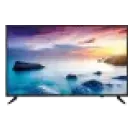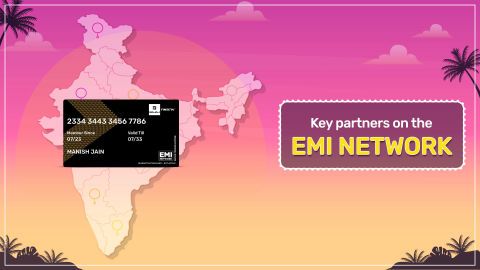If you are interested in televisions, take a moment to check it out on Bajaj Mall. Once you have gathered all the necessary details, head to any of Bajaj Finserv’s 1.5 lakh partner stores across 4,000 cities in India to discover a wide selection of TVs. Choose the model that best fits your needs and take advantage of zero down payment offers, making your purchase more affordable by converting the cost into Easy EMIs.
3 min
08-Nov-2024
Both satellite and cable TV services bring entertainment to your doorstep, but they cater to different needs. Satellite TV offers global channel options and better picture quality, making it ideal for rural areas. In contrast, cable TV provides stable connections and bundle deals with internet services, typically suiting urban households. Each has its pros and cons, depending on location, content preferences, and budget.
If you are interested in televisions, take a moment to check it out on Bajaj Mall. Once you have gathered all the necessary details, head to any of Bajaj Finserv’s 1.5 lakh partner stores across 4,000 cities in India to discover a wide selection of TVs. Choose the model that best fits your needs and take advantage of zero down payment offers, making your purchase more affordable by converting the cost into Easy EMIs.
If you are interested in televisions, take a moment to check it out on Bajaj Mall. Once you have gathered all the necessary details, head to any of Bajaj Finserv’s 1.5 lakh partner stores across 4,000 cities in India to discover a wide selection of TVs. Choose the model that best fits your needs and take advantage of zero down payment offers, making your purchase more affordable by converting the cost into Easy EMIs.
Analysis of satellite and cable TVs
Satellite and cable TV services are two popular options for home entertainment, each offering distinct advantages. Satellite TV uses satellite signals to broadcast channels, making it accessible even in remote areas. On the other hand, cable TV relies on underground cables and local infrastructure to deliver content, ensuring a stable connection in urban settings. Both television services offer HD and regional channels, but their availability, quality, and pricing vary.
For a detailed comparison of display technologies, see our OLED vs LED TV guide to find the perfect screen for your setup.
In contrast, cable TV offers greater reliability in urban areas with well-established infrastructure. It is often bundled with internet services, making it a convenient option for households that want both connectivity and entertainment in one package. However, coverage is limited to areas where cable networks are available, which can be a drawback for people living in remote locations.
When deciding between the two, consider your location and the type of content you prefer. If you want international channels and can manage occasional signal interruptions, satellite TV may be the better option. If you prioritise reliability and bundle options, cable TV is a practical choice.
To maximise your viewing experience, opt for a television with advanced display capabilities. Learn more about picture quality in our HD vs HDR TV comparison and find the best TV to suit your entertainment needs.
Key features of each option
- Satellite TV:
- Provides wider coverage, making it ideal for rural areas without cable infrastructure.
- Offers a broad range of national and international channels with HD and 4K resolution options.
- Susceptible to weather disruptions, which can impact signal quality.
- Cable TV:
- Delivers a more stable connection in urban areas, thanks to underground cabling.
- Often comes bundled with internet services, offering cost effective packages.
- Limited in coverage to regions where the infrastructure is available.
Overview of satellite vs cable TVs
| Aspect | Satellite TV | Cable TV |
| Coverage | Available in remote and rural areas | Limited to regions with cable infrastructure |
| Picture quality | HD and 4K options available | HD, with fewer 4K offerings |
| Connection stability | Weather can disrupt the signal | Stable connection through underground cables |
| Subscription plans | Wide range of national and international channels | Often bundled with internet services |
| Installation | Requires satellite dish and receiver | Requires cable installation to the home |
For a detailed comparison of display technologies, see our OLED vs LED TV guide to find the perfect screen for your setup.
Making the right choice between satellite and cable TVs
Choosing between satellite and cable TV depends on several factors, including location, content preferences, and budget. Satellite TV is ideal for those living in rural areas or regions without access to cable infrastructure. Its wide channel selection, including international content, makes it appealing to viewers seeking diverse programming. However, it is important to note that adverse weather conditions can sometimes interrupt the signal.In contrast, cable TV offers greater reliability in urban areas with well-established infrastructure. It is often bundled with internet services, making it a convenient option for households that want both connectivity and entertainment in one package. However, coverage is limited to areas where cable networks are available, which can be a drawback for people living in remote locations.
When deciding between the two, consider your location and the type of content you prefer. If you want international channels and can manage occasional signal interruptions, satellite TV may be the better option. If you prioritise reliability and bundle options, cable TV is a practical choice.
To maximise your viewing experience, opt for a television with advanced display capabilities. Learn more about picture quality in our HD vs HDR TV comparison and find the best TV to suit your entertainment needs.
Explore TVs on EMI with Bajaj Finserv
For those seeking a reliable TV, you can explore a range of options on Bajaj Mall. Once you have reviewed all the product details, simply visit your nearest Bajaj Finserv partner store to select your preferred model. With financing options from Bajaj Finserv, you can easily purchase your favourite TV without worrying about the budget. Additionally, you have the flexibility to choose a convenient repayment tenure, allowing you to settle the cost in affordable EMIs. Bajaj Finserv also offers financing solutions on electronics.Benefits of shopping with Bajaj Finserv
- Affordable pricing: Enjoy cost effective pricing on TVs at any of the Bajaj Finserv partner stores, making your investment lighter on the wallet.Easy EMIs: Buying a TV is now more convenient. With financing from Bajaj Finserv, opt for flexible repayment options and spread the cost over Easy EMIs.Zero down payment: Say goodbye to upfront costs! Selected TVs come with a zero down payment option, letting you pay gradually without an initial lump sum.Wide range and accessibility: Access a vast selection of TVs across multiple partner stores, making it easy to find the perfect fit for your home.Special deals and cashback: Unlock exciting offers and cashback when you choose a TV with Bajaj Finserv’s financing options.Complimentary home delivery: Enjoy the convenience of free home delivery on selected TVs, enhancing your overall shopping experience.
Frequently asked questions
What are the main differences between satellite and cable TV?
The primary differences between satellite and cable TV lie in their delivery methods and channel availability. Satellite TV uses satellite signals transmitted to a dish, while cable TV relies on physical cables for transmission. Satellite TV often provides more channel choices, especially in rural areas, whereas cable may offer better local content and services.
Which option offers better channel selection?
Satellite TV offers a broader channel selection compared to cable TV, particularly for specialised programming like international channels, niche networks, and premium services. However, the exact channel availability can vary depending on the provider and the chosen subscription package, so it is essential to compare offerings based on your preferences.
Are there exclusive features of either service?
Both satellite and cable TV services have unique features. Satellite TV often includes options like DVR capabilities, international channel packages, and mobile viewing apps. In contrast, cable TV may offer more local channels, bundled internet services, and exclusive on demand content. Each service's features can vary by provider, so comparing options is important.
Show More
Show Less











